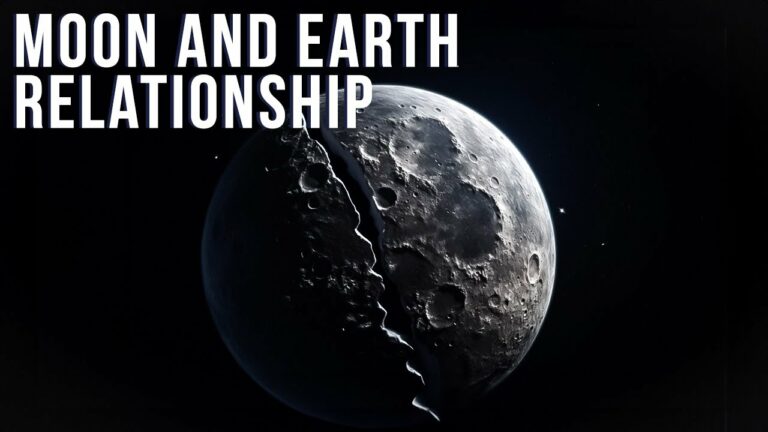Can Earth’s Gravity Break The Moon Apart?
For millions of years, the moon has been Earth’s companion. While it will very definitely continue that way, Earth’s gravity has a way of destroying it. We all know that the moon is slowly moving away from us. It has been going on for the last 2.5 billion years. But what if the moon comes very close to Earth? Can Earth’s gravity destroy it? What conditions and factors could make this happen? In this video, we will talk about all of that and more.
But before we address the elephant in the room, which is the question of Earth’s gravity ripping apart our moon, we will first need to understand the concept of tidal forces, the Roche limit, and the relationship between the moon and our earth. The Moon has been Earth’s constant companion for millions of years, yet we sometimes overlook the myriad ways it influences the planet. It is responsible for a variety of phenomena on Earth’s surface, including tides, weather patterns, and the stabilization of the Earth’s rotation. Natural satellites exist in our solar system. Planets circle the sun, and the majority of them have moons around them. The moons in our solar system are made of a variety of materials and sizes, ranging from microscopic ice balls a few hundred meters across to rocky entities with atmospheres massive enough to be termed planets if they orbited the Sun on their own.
Gravitational force
The gravitational force of a planet on a satellite weakens as the two go farther apart. Gravitational force, in particular, obeys an inverse-square rule, which means that it weakens inversely with the square of the distance between the two objects.
TIDAL FORCES
This is where the concept of tidal forces comes into effect. Tidal forces are caused by gravitational forces with opposing values at various places on the same body. First, examine the Earth-Moon system.
ROCHE LIMIT
The answer to this conundrum is that the concept of a fixed planet and a moving moon is incorrect. It’s too simplistic. The Earth does not remain exactly stationary when the Moon circles it. In reality, the Earth and the Moon circle each other. In general, two bodies orbit around a point in the middle of them known as their center of gravity. If the Earth and the Moon were placed on a see-saw, their mutual center of gravity would be the point at which a fulcrum would cause the two masses to balance. Because the Earth has about 81 times the mass of the Moon, the center of gravity of the Earth/Moon system is far closer to the center of the Earth than the center of the Moon. This center of gravity is, in reality, within the Earth, but not all the way to the core. The tidal forces on our moon, or any moon, in fact, can vary depending upon its distance. The crucial thing to remember is that as the moon approaches the earth, the tidal forces increase. With each constant reduction in distance, the intensity of the tidal force increases quicker and faster.
CAN EARTH’S GRAVITY BREAK THE MOON ?
After talking about how tidal forces and the Roche limit play an important role, let’s talk about if Earth’s gravity can break the moon apart. According to our current laser range data, it is moving away from the Earth at a pace of 3.78 centimeters per year. As things now stand, the obvious response is that Earth’s gravity will not split it apart.
Do not forget to share your opinion with us to provide you with the best posts !




0 Comments